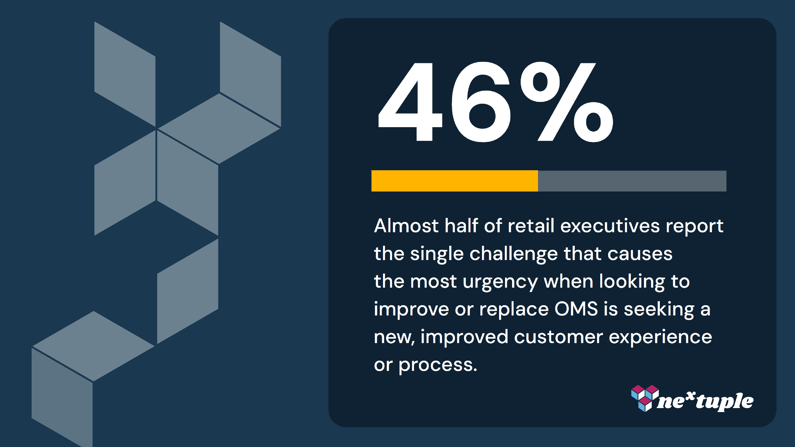Recently, we talked to a broad range of executives to gauge their satisfaction levels and identify areas of focus within the Order Management System (OMS) domain for the year ahead.
The OMS system, as we all know, provides critical infrastructure for companies to execute OMNI channel fulfillment transactions across their sales channels. The OMS is at multiple points of the order journey and on direct display to the consumer. Whether it involves providing up-to-date shipping updates, ensuring order visibility across channels, maintaining order fill rates for Buy Online, Pick Up in Store (BOPIS), or presenting accurate inventory on the product detail page, your OMS capabilities are in the spotlight.
Therefore, I like to think of the OMS as a very small step removed from the experiences consumers have while shopping online. Nowadays that step is getting smaller and smaller as the OMS, or components of the traditional OMS such as promising and inventory visibility, become more exposed in the shopping journey.
In our recent survey, approximately 98% of respondents indicated they would be “very likely” or “somewhat likely,” to remain with their current OMS provider when considering an upgrade. However, when asked specifically about their satisfaction with key components of that solution, the results were not nearly as stellar.
When asked about what features they are considering upgrading or replacing in the next 6-18 months, over 70% of respondents stated that inventory visibility and sourcing optimization were on the list - which are both core features of an OMS. Almost half (46%) said that “seeking a new and improved customer experience or process” is the most urgent need they have when considering improving or replacing their current OMS.

Why is it that 98% of them are considering staying in their current setup? The switching costs, and more importantly, the risk profile of this domain, continues to go up as the OMS becomes more and more consumer facing. Trust us, we get it. We’ve been on the receiving end of many frantic calls of OMS implementations gone bad. It’s likely that the 98% are more so driven by fear of switching than it is complete satisfaction with features, costs, and modern technology.
The irony lies in the fact that as OMS solution providers have invested in a more modern, microservices-based architecture, they have paved the way for retailers to consider multiple choices in how they upgrade the consumer experience and optimize costs in order fulfillment. Microservices for inventory, promising, sourcing, and store fulfillment are just a few examples of how retailers are augmenting their current legacy OMS. The days of considering one vendor to manage your OMS needs are over. As a result, retailers can have it both ways. They can avoid the risk installing a new OMS platform and, instead, optimize their operations with microservices where they identify business value.
The OMS landscape is evolving. The 2024 survey provides fascinating insight into where retailers are on this journey, and we hope you find it valuable for your own purposes.

.png?width=250&height=56&name=nextuple_logo_vector%20(4).png)
